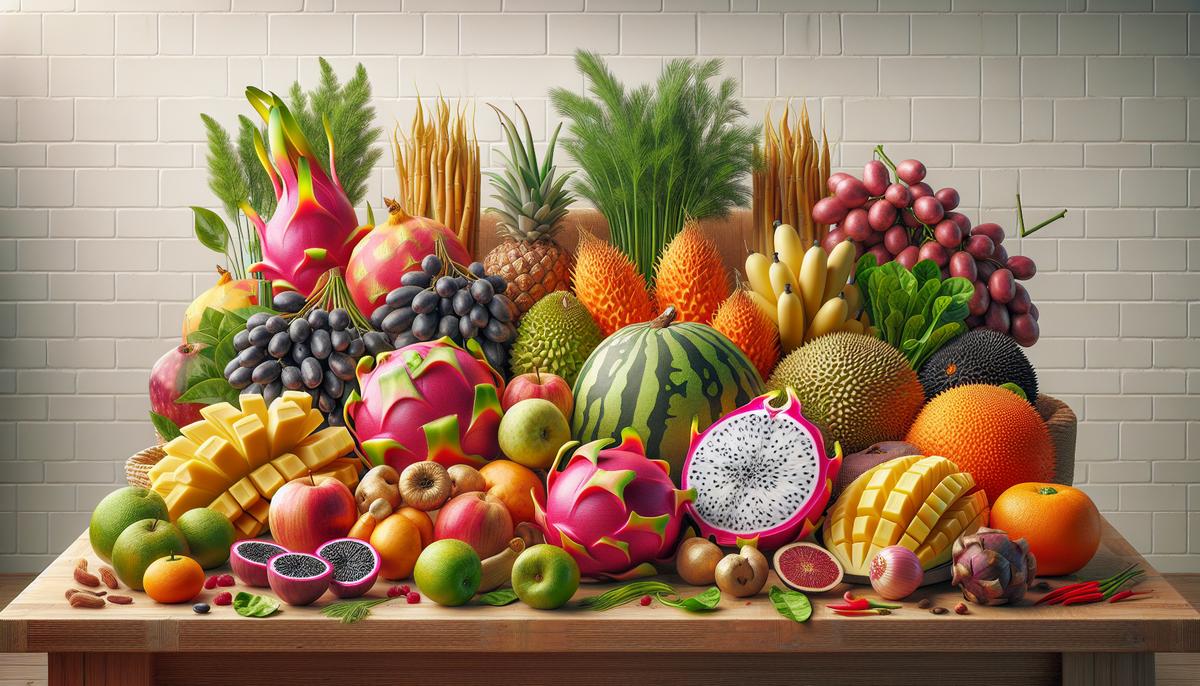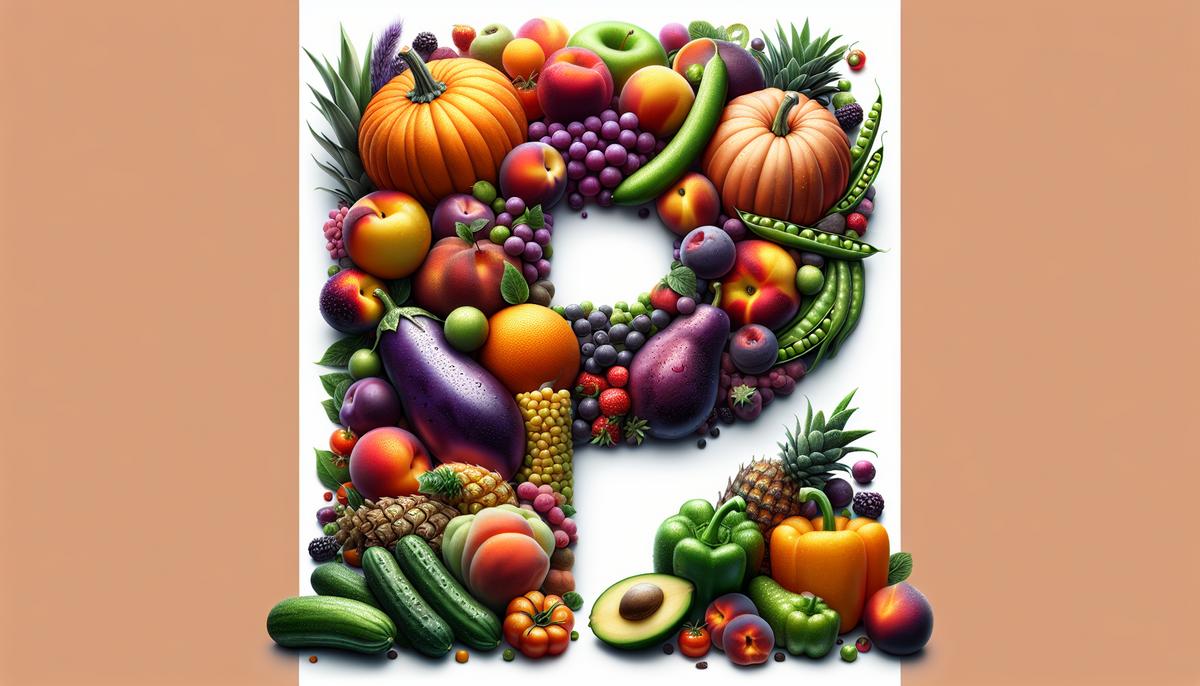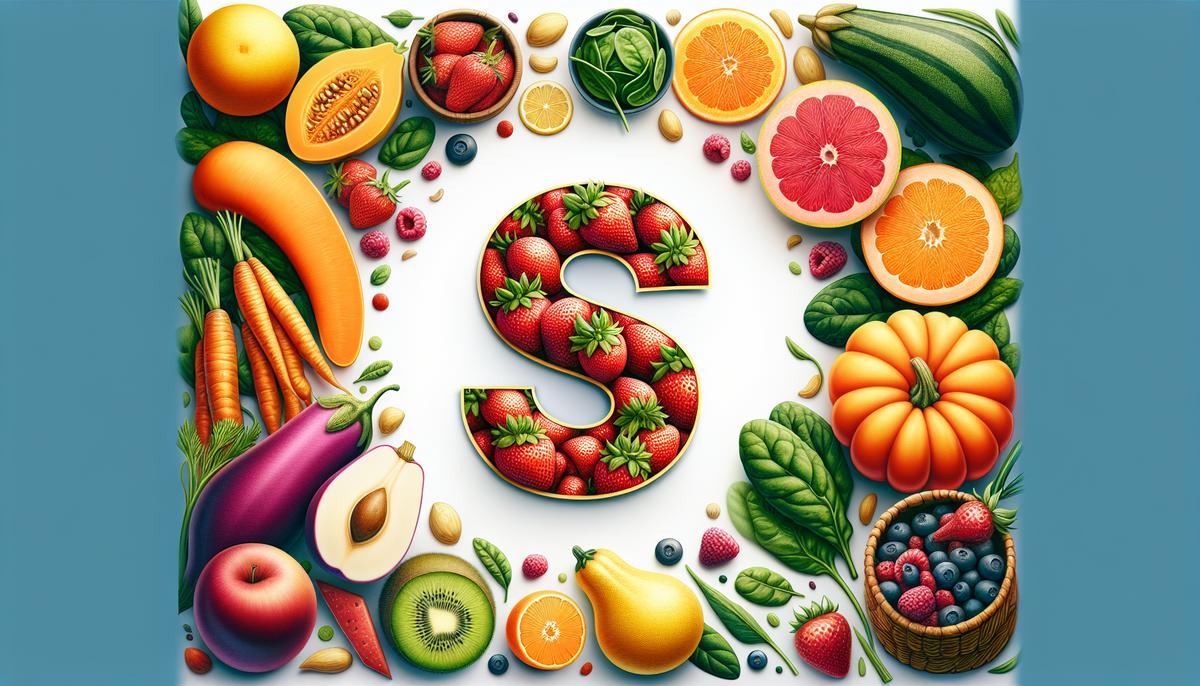Eating a variety of fruits and vegetables is a delicious way to ensure you get a wide range of nutrients. Today, let’s look at some fruits and vegetables that start with the letter “D”. Each offers unique flavors and nutritional benefits that can enhance your culinary creations and support your health. From sweet to savory, these “D” foods are worth adding to your shopping list.
Fruits that start with D
D’Agen Sugar Plums
D’Agen sugar plums are small, sweet plums that have a rich history, originating from the French region of Agen. These little gems are often dried to become prunes, but fresh D’Agen sugar plums are a delight with their honey-like sweetness and tender flesh. They are typically in season during late summer, making them a perfect addition to warm-weather recipes.
Nutritionally, D’Agen sugar plums are packed with dietary fiber, antioxidants, and vitamins such as vitamin C and vitamin K. The high fiber content aids in digestion and helps maintain a healthy gut, while the antioxidants combat oxidative stress in the body. Vitamin C boosts the immune system, and vitamin K is essential for blood clotting and bone health.
In the kitchen, D’Agen sugar plums can be enjoyed fresh, added to fruit salads, or baked into desserts like tarts and pies. When dried as prunes, they make a fantastic snack and can be used in savory dishes such as stews and roasts to add a touch of natural sweetness.
Date Plum
The date plum, also known as Diospyros lotus, is a small fruit that resembles a mini persimmon. Native to Southeast Europe and Asia, the date plum has a sweet and rich flavor, often described as a cross between a date and a plum. These fruits are typically harvested in the fall and can be eaten fresh or dried.
Date plums are a good source of dietary fiber, vitamin A, and manganese. The fiber content helps regulate digestion and promotes a feeling of fullness, making it a great fruit for weight management. Vitamin A supports eye health and the immune system, while manganese plays a role in bone formation and metabolic processes.
Culinary uses for date plums include adding them to salads, blending them into smoothies, or using them in baking for a natural sweetener. They can also be dried and used similarly to raisins or dates, making them a versatile ingredient in both sweet and savory dishes.
Dates
Dates are sweet, chewy fruits that grow on the date palm tree, primarily found in the Middle East and North Africa. They come in various varieties, with Medjool and Deglet Noor being the most popular. Dates have a deep caramel-like flavor and a soft, sticky texture, making them a natural sweetener in many recipes.
These fruits are incredibly nutrient-dense, offering a good amount of dietary fiber, potassium, magnesium, and vitamins B6 and K. The fiber content supports digestive health, while potassium helps regulate blood pressure and muscle function. Magnesium is crucial for bone health and energy production, and vitamin B6 aids in brain development and function.
Dates can be eaten as a snack, stuffed with nuts or cheese for an elegant appetizer, or chopped and added to baked goods like cookies and breads. They also work well in savory dishes, such as tagines and salads, where their sweetness balances out other flavors.
Dried Apricots
Dried apricots are a popular dried fruit made by dehydrating fresh apricots. They retain the sweet and tangy flavor of fresh apricots but have a chewy texture and a more concentrated taste. These little orange gems are available year-round and make a convenient snack.
Nutritionally, dried apricots are high in dietary fiber, vitamins A and E, and potassium. The fiber aids in digestion and helps prevent constipation, while vitamin A is essential for vision, immune function, and skin health. Vitamin E acts as an antioxidant, protecting cells from damage, and potassium helps maintain proper heart and muscle function.
In the culinary world, dried apricots can be used in a variety of ways. They are excellent in trail mixes, granola bars, and baked goods like muffins and cakes. They also pair well with savory dishes, such as couscous or pilaf, adding a hint of sweetness that complements spices and herbs.
Dried Cranberries
Dried cranberries are small, tart fruits that have been sweetened and dried to create a chewy, flavorful snack. They are commonly found in trail mixes, salads, and baked goods, and are especially popular during the fall and winter seasons.
These dried fruits are rich in antioxidants, particularly vitamin C and vitamin E, which help protect the body from oxidative stress. They also provide dietary fiber, which supports digestive health. Additionally, cranberries contain compounds that promote urinary tract health by preventing harmful bacteria from adhering to the bladder walls.
Dried cranberries can be enjoyed on their own as a snack or added to a variety of dishes. They work well in salads, providing a tart contrast to greens and nuts, and can be mixed into oatmeal or yogurt for a flavorful breakfast. In baking, they add a burst of flavor to cookies, breads, and scones.
Dried Figs
Dried figs are the dehydrated form of fresh figs, retaining much of their sweetness and chewy texture. These fruits have been enjoyed for centuries and are known for their unique flavor, which is both rich and honey-like. Dried figs are available year-round, making them a convenient and nutritious option.
Nutritionally, dried figs are high in dietary fiber, potassium, calcium, and iron. The fiber content promotes healthy digestion and can help regulate blood sugar levels. Potassium supports heart health and muscle function, while calcium and iron are essential for bone health and oxygen transport in the blood, respectively.
Dried figs can be eaten as a snack, added to cheese boards, or used in baking. They pair beautifully with nuts and cheese, making them a great addition to appetizers. In baking, they can be incorporated into cookies, cakes, and breads, or used to make fig preserves and spreads.
Durian
Durian, known as the “king of fruits,” is a large, spiky fruit native to Southeast Asia. It has a distinctive odor that some find off-putting, but its creamy, custard-like flesh is highly prized for its unique flavor, which is a mix of sweet and savory. Durian is typically available in tropical regions and is often eaten fresh.
Durian is rich in energy, providing a good amount of carbohydrates and healthy fats. It also contains vitamins C and B-complex, as well as minerals such as potassium, iron, and magnesium. The high carbohydrate content makes it a good energy source, while the vitamins and minerals support various bodily functions, including immune health and muscle function.
In the kitchen, durian can be eaten on its own, blended into smoothies, or used in desserts like ice cream, cakes, and pastries. It can also be incorporated into savory dishes such as soups and curries, where its unique flavor adds depth and complexity.
Vegetables that start with D
Daikon Radish
Daikon radish is a large, white root vegetable commonly used in Asian cuisine. It has a crisp texture and a mild, slightly peppery flavor. Daikon is often used in salads, pickles, and soups, and can be enjoyed both raw and cooked.
Nutritionally, daikon radish is low in calories but high in vitamin C, potassium, and folate. Vitamin C boosts the immune system and promotes healthy skin, while potassium helps regulate blood pressure and muscle function. Folate is important for cell division and DNA synthesis, making daikon a nutritious addition to any diet.
In the kitchen, daikon can be sliced and added to salads for a refreshing crunch, or pickled to serve as a tangy side dish. It can also be simmered in soups and stews, where it absorbs the flavors of the broth and becomes tender. Grated daikon is often used as a condiment in Japanese cuisine, adding a mild, zesty flavor to dishes.
Dandelion Greens
Dandelion greens are the leafy part of the dandelion plant, often considered a weed but highly nutritious. These greens have a slightly bitter taste and can be used in a variety of culinary applications. They are typically harvested in the spring and early summer when they are most tender.
Dandelion greens are a powerhouse of nutrients, including vitamins A, C, and K, as well as calcium, iron, and antioxidants. Vitamin A supports vision and immune health, while vitamin C promotes skin health and collagen production. Vitamin K is essential for blood clotting and bone health. The calcium and iron content support bone health and oxygen transport in the blood, respectively.
Culinarily, dandelion greens can be used in salads, sautéed as a side dish, or added to soups and stews. Their slightly bitter flavor pairs well with rich ingredients like bacon or cheese, making them a versatile addition to many recipes. They can also be blended into smoothies for a nutrient boost.
Delicata Squash
Delicata squash is a type of winter squash with a creamy texture and sweet, nutty flavor. It has a thin, edible skin, making it easy to prepare and cook. Delicata squash is typically available in the fall and winter months and is a favorite among squash enthusiasts.
This squash is rich in vitamins A and C, as well as dietary fiber and potassium. Vitamin A is crucial for vision and immune function, while vitamin C supports skin health and collagen production. The dietary fiber promotes healthy digestion, and potassium helps regulate blood pressure and muscle function.
In the kitchen, delicata squash can be roasted, stuffed, or added to soups and stews. Its sweet flavor makes it a perfect addition to autumnal dishes, such as roasted vegetable medleys and grain salads. The thin skin means there’s no need to peel it, saving time and adding extra nutrients to your meal.




